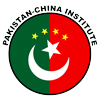Pak-China to advance socio-economic ties with construction of new Silk Road
Source : Pakistan Observer Date : 06-11-2014
 |
Thursday, October 30, 2014 - Urumqi (Xinjiang)—Pakistan and China will get a major breakthrough in their socio-economic ties as well as having more and more people-to-people contact with the construction of new silk road. There will be a big advantage to all those countries situated along the Silk Road economic belt. This will bring prosperity to people of the entire region, a senior official of information department of Xinjiang Uygur Autonomous region Luo Fuyong. Addressing the opening session of a week-long Eurasia media seminar, he said the journalists should fulfill their responsibility highlighting the significance of such mega projects that could change destiny of the people. The seminar was being attended by media persons from Pakistan, India and other regional countries. It was jointly arranged by the China State Council and the Information Department of the Xinjiang Autonomous Region.
Luo Fuyong underscored the importance of media in promoting common interests of the regional countries. He spoke high about the importance of new Silk Road in bringing the countries of Eurasia more closer to each other. The ancient Silk Road played a key role in cultural exchanges between Asia and Europe. On this basis, Chinese President Xi Jinping has proposed building a Silk Road economic belt while attending the Shanghai Cooperation Organization summit in September. Xi plans to connect economic zones from the Asia-Pacific to the European Union through the states of Central Asia, which will allow China to connect 18 countries with a population over 3 billion.
The new economic belt is also expected to boost the economy of western China and create 500 billion yuan (US$82.35 billion) worth of business opportunities. According to the State Council, China’s cabinet, the initial plan for the economic zone will center upon three routes: the north route being the Eurasian Land Bridge focusing on logistics and transportation; the center route mainly focusing on oil and natural gas pipelines and the south route on transnational roads to develop five Chinese province-level regions in the northwest area, namely Chongqing, Sichuan, Gansu, Inner Mongolia and Xinjiang. Luo Fuyong emphasized that the media Houses should play pro-active role in making the idea a reality as soon as soon as possible. Media, he added can also play a vital role in promoting mutual understanding and deepening friendship by expanding exchanges in education, culture and tourism.
The Silk Road is not only a trade route, but also a route of culture and peace. The Euro-Asia media Forum serves as a good platform for having more and more communication and exchanges among the people of the regional countries, he added. He also highlighted repaid development of Xinjiang Autonomous region which which contributes towards the bright socio-economic prosperity of the neighbouring countries. Xinjiang, he added serves as gateway linking China with South Asia and Central Asian countries. He hoped that building new silk road will open avenues of cooperative partnership among the regional countries as well as deepening relationship among the common people.
Xinxiang’s special location at the heartland of Eurasia has assumed special importance for regional development through road infrastructure network. Xinjiang, which covers one-sixth of China’s landmass, borders key regional players including Pakistan. But regional economic activity has been slow partly due to poor infrastructure along the typically harsh terrain of the border region. It is hoped that the proposed the construction of Pak-China economic corridor along the Silk Road will generate immense economic opportunities for regional countries and fop deepening relations at the peoples’ level.—INP
